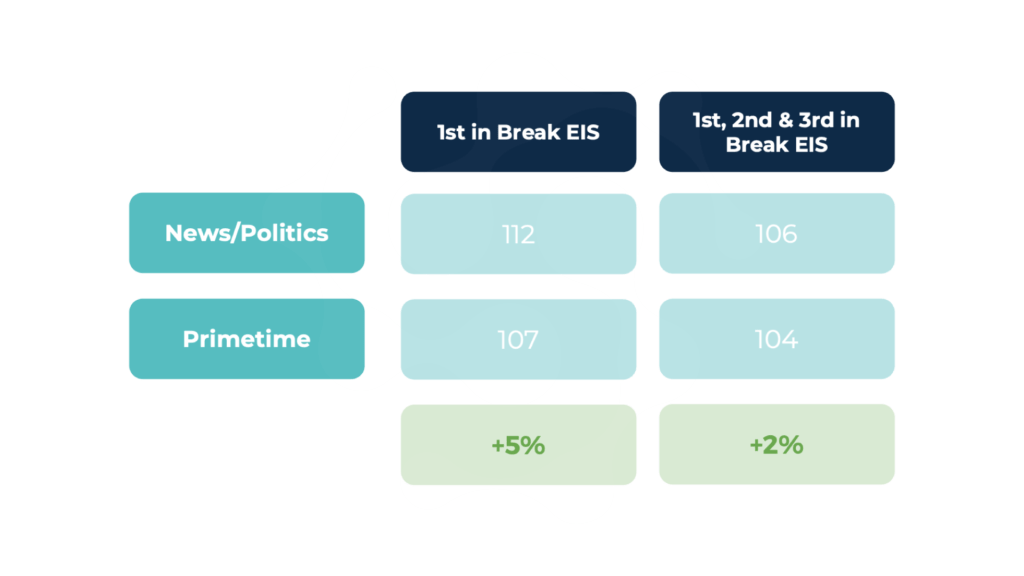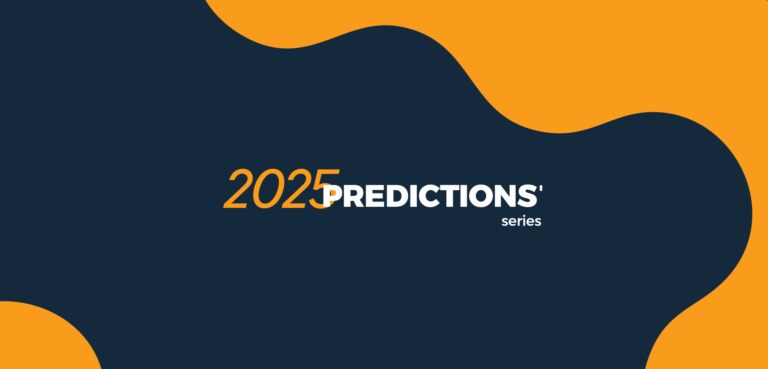In the realm of advertising, the success of a campaign relies on the creative but also, to a significant extent, on the context in which it is placed. What a way to open, you might be thinking? Well, we haven’t come to this conclusion overnight. Years of work and more than 200,000 hours of monitored reactions to TV content allow us to make such preposterous/bold claims (you’ll be the judge of that) and provide a unique insight into how audiences engage with content, how it carries over to ads, and how it can be leveraged to maximize ROAS.
2024, as other election years across the world, is seeing some advertisers shy away from the news/politics environment in an effort to protect their brand. To see if this is the way to go, we decided to test how brands perform in news/politics versus primetime programming.
The results? Significant differences that could impact decisions around strategic ad placements.
Media Quality as the Starting Point
The quality of the media is paramount as it refers to the content’s ability to deliver an audience that is not large but, more importantly, engaged. In the context of television, engagement is reflected in how absorbed viewers are by the content they watch. High engagement levels indicate that viewers are emotionally invested in the content, which sets the stage for impactful advertising.
The Role of Emotional Engagement Carry-over
A critical insight springing from our work is the content’s carry-over effect. The largest predictor of emotional engagement with TV ads is the emotional engagement with the content surrounding those ads. When viewers are emotionally engaged by the content, this engagement carries over to the advertisements shown during these programs. Essentially, an ad benefits from the emotional context into which they are inserted.
News/Politics vs. Primetime: Brands, debates, drama!
We decided to test this — in environments like news/politics, where emotional engagement is inherently high, strategically placed ads can leverage this heightened emotional state to achieve greater recall and memorability. This would demonstrate the substantial impact of context on ad effectiveness. For comparison, we decided to benchmark this against primetime programming.
To go straight to the point, here are the compelling insights revealed by our analysis:
Higher Emotional Impact
Ads within news/politics content evoke stronger emotional responses compared to those aired during primetime slots.
Increased Brand Memorability
Brands featured in news/politics segments see a +5 percentage point increase in viewer recall over those in primetime.

Emotional Impact Score (EIS) and Brand Recall
Increased Impact of First-in-Break Positioning
Ads that are first-in-break in news/politics content benefit from a +5% boost in Emotional Impact Score (EIS) relative to their primetime counterparts.

Emotional Impact Score (EIS)
Memorability Advantage for First-in-Break
Brands that are first in break in news/politics content are more likely to be remembered (+2pp), when compared to primetime.
When analyzing large-scale data, small percentage differences can translate into major impacts. Let’s break it down with an example from a sample of 10 million people:
- 14% of 10 million represents 1.4 million individuals.
- 12% of 10 million accounts for 1.2 million individuals.
The difference between these two percentages is just 2 percentage points (2pp), but in terms of real impact, it equals a staggering 200,000 people!!!

Brand Recall
Note: Only brands with 1 impression per session were considered for this analysis.
Implications for Advertisers
These findings suggest that news/politics content not only holds viewers’ attention but engages them on a deeper emotional level, enhancing the retention of the advertised brands. The heightened memorability and emotional impact can be attributed to the engaging nature of news/politics, where viewer involvement is typically higher due to the relevance and timeliness of the content.
Strategic Placement
Choose news/politics slots to capitalize on the high emotional engagement these programs elicit. This engagement can boost the impact of your ads and how they perform in terms of viewer engagement and recall.
Leverage the First-in-Break Advantage
Being the first ad in the commercial break can amplify the carry-over effect. Ads that appear first are positioned to make the strongest impression, further enhanced by the preceding content’s emotional grip on the audience.
Conclusion
The strategic implications of these findings are clear: placing ads in news/politics content not only increases the chances of viewer engagement but also significantly boosts brand recall. The emotional engagement fostered by these programs doesn’t just stay with the content; it carries over to the ads, making them more impactful and memorable. As advertisers look to maximize the ROI of their campaigns, turning to news/politics slots may very well be a great bet for achieving exceptional engagement and recall.
NOTE: This analysis includes data from 11 networks (FTA & Cable, including Generalist and News channels), covering 41 shows (of all genres) and involving 671 brands. Due to the extensive number of brands included, we won’t be listing them individually but they are a reflection of the natural brand presence in US TV. The data spans the period from November 2023 to September 2024. Brand recall analysis was focused on brands with only one impression per show to control for time of exposure effects on brand recall.
Are you ready to rethink your ad placement strategy and tap into the power of news/politics programming? Contact us today to learn how to leverage the emotional engagement of your audience and turn it into memorable advertising that resonates and retains.
For additional information, make sure you check out our latest webinar with the Video Advertising Bureau (VAB) where, in addition to the central discussion on how biometric insights can be used for optimizing political communication, we also address the question of brands and advertising in political environments.




